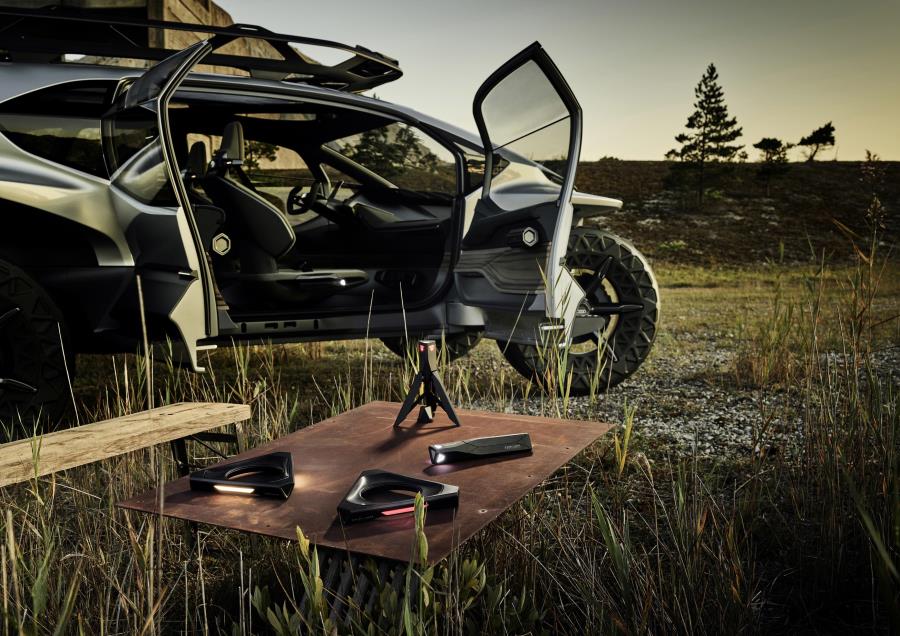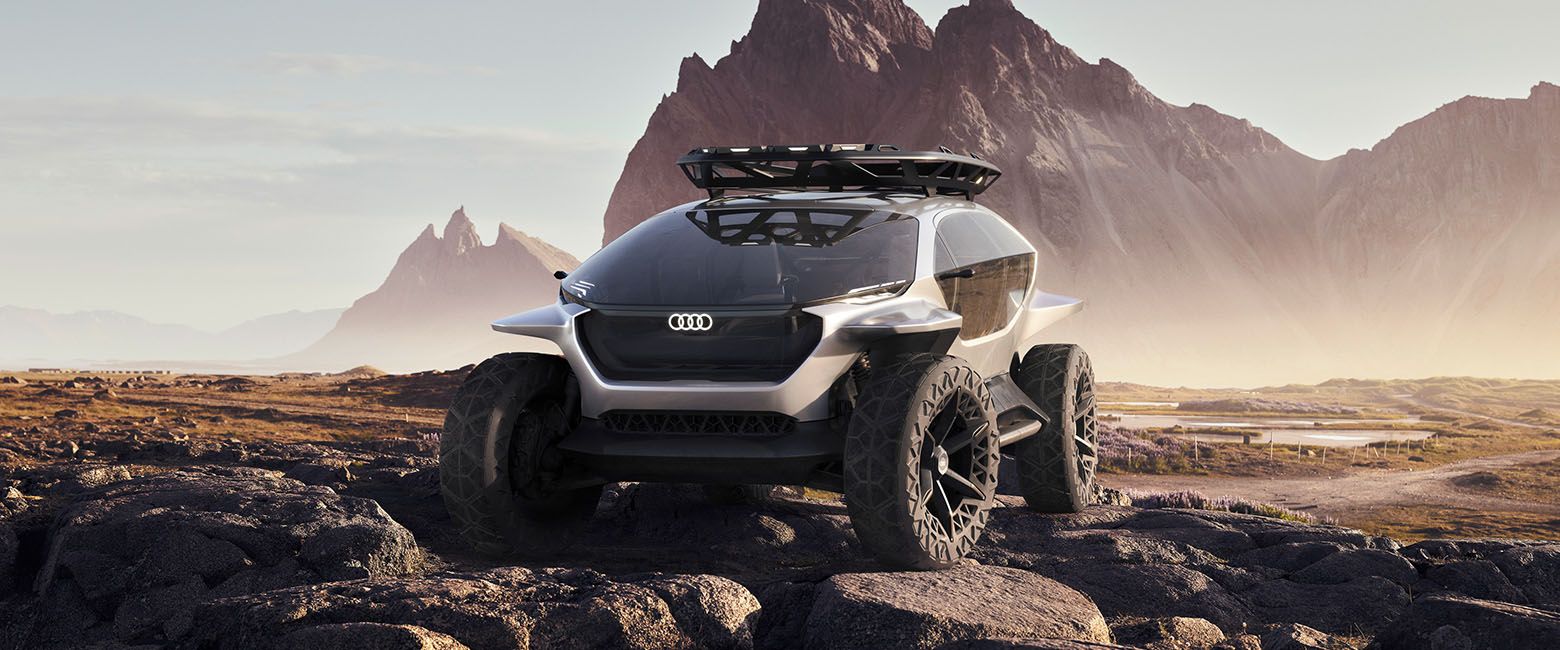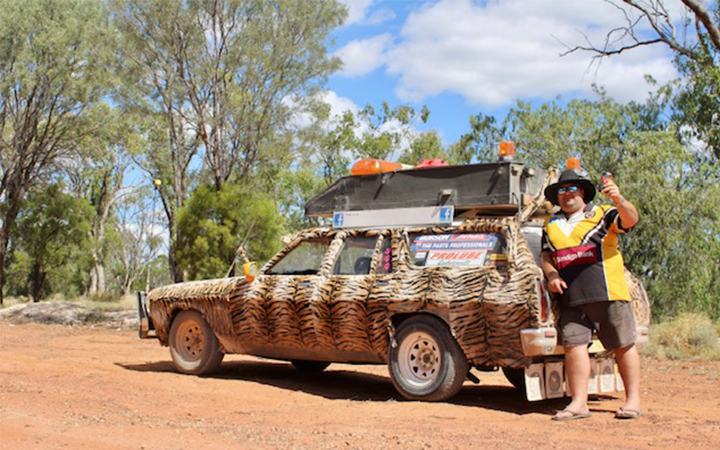From the pictures displayed of the AI:TRAIL, you may notice the panoramic glass exterior, the high ground clearance and the utility tires. However, in person, the first thing you will notice is the fleet of drones accompanying this car.
Instead of traditional headlights, the AI:TRAIL includes a fleet of five rotorless, triangular, electronically operated drones called Audi Light Pathfinders. These drones fly ahead of the AI:TRAIL, illuminating the path ahead or transmitting a video image to the driver’s display.
When stationary, these drones can also illuminate the surrounding area from their position on the roof or can illuminate the interior through the transparent roof. When integrated with the AI:TRAIL’s navigation system, they are even capable of projecting directional symbols and written information onto a route to help direct drivers when exploring.
The AI:TRAIL was born from Audi’s concept of personal mobility where cars no longer have to compromise between a wide range of uses. Instead, for a limited period, Audi plans for customers to be able to order any of their specialist vehicles on-demand from Audi to suit their requirements.

This means that the AI:TRAIL has been designed for the ultimate off-road experience. With four electric motors, Audi’s quattro permanent all-wheel drive, 22-inch wheels and a ground clearance of 34 centimetres, the AI:TRAIL is ready for any futuristic AI-assisted adventure.
The dimensions of the AI:TRAIL are important both inside and outside the car, as the ground clearance allows it to ford through water more than half a meter deep, and the chassis architecture provides the vehicle with plenty of agility without compromising the battery unit which is integrated into the floor.
Passengers relax inside the vehicle with near panoramic views of their surroundings: the windows extend down between the wheels and high enough that almost the entire roof is made of glass. Therefore, there are no screens onboard for streaming. Instead, the Audi designers wanted to offer unparalleled views of nature and the car’s surroundings to its passengers.
This lack of screens means the dashboard consists of the driver’s smartphone. With their smartphone plugged into the AI:TRAIL, the driver is ready to go with all the information normally included on a traditional dashboard now fed through a smartphone.
The AI:TRAIL also has Level 4 self-driving abilities on selected sealed roads, and Level 3 self-driving on roads and tracks that have been well mapped. However, this isn’t the only AI abilities included on the AI:TRAIL.

Optical sensors and electronic stability control detect the condition of the road surface and adjust the air pressure in the tires accordingly. The sensor system for the ESP also assists the driver when the vehicle is in a tilted position or on a challenging incline. These systems also deliver warnings to the driver when critical limits are about to be exceeded, such as ground clearance or angles of incidence.
Finally, a large draw for the AI:TRAIL is its range. Instead of building the AI:TRAIL for speed, Audi focused its efforts on making sure the vehicle could get you where you need to go, in areas without charging infrastructure. The lithium-ion battery included in the AI:TRAIL provides it with a range of 400 to 500 kilometres on roads or easy terrain. On rough ground the AI:TRAIL’s range it still 250 kilometres.
In a time when we are spending our free time exploring our own backyards, Audi may have delivered what the future of four-wheel driving could look like.


